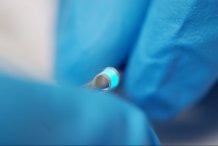Dec 4 2018
Thanks to the application of the wonder material graphene, the quest for producing durable, affordable, and mass-produced “smart textiles” has been given a new push.
 (Image credit: Prof. Craciun Lab)
(Image credit: Prof. Craciun Lab)
Headed by Professor Monica Craciun from the University of Exeter Engineering department, an international group of researchers has developed a novel method for producing fully electronic fibers that can be integrated into the production of day-to-day clothing.
The development of the current generation of wearable electronics involves fixing devices to fabrics, which could make them extremely rigid and prone to malfunctioning. However, in the latest study, the electronic devices are embedded in the material’s fabric, and this is done by coating electronic fibers with durable and lightweight components that will enable showing images directly on the fabric.
According to the scientists, the discovery could transform the development of wearable electronic devices for applications in many different day-to-day applications, and also medical diagnostics and health monitoring, like blood pressure and heart rates.
The international collaborative study has been reported in the scientific journal Flexible Electronics. Experts from the Centre for Graphene Science at the University of Exeter, CenTexBel in Belgium, and the Universities of Aveiro and Lisbon in Portugal took part in the study.
For truly wearable electronic devices to be achieved, it is vital that the components are able to be incorporated within the material, and not simply added to it.
Monica Craciun, Professor and Study Co-Author, Engineering Department, University of Exeter.
Dr Elias Torres Alonso, former PhD student in Professor Craciun’s team at Exeter and now Research Scientist at Graphenea, added, “This new research opens up the gateway for smart textiles to play a pivotal role in so many fields in the not-too-distant future. By weaving the graphene fibres into the fabric, we have created a new technique to all the full integration of electronics into textiles. The only limits from now are really within our own imagination.”
Graphene is only one-atom thick, which makes it the thinnest substance with the ability to conduct electricity. It is also one of the strongest known materials and quite flexible. In recent years, the race has been on for engineers and scientists to adapt graphene for applications in wearable electronic devices.
The latest study applied existing polypropylene fibers—often employed in an array of commercial applications in the textile sector—to fix the novel, graphene-based electronic fibers to develop light-emitting and touch-sensor devices.
The innovative method means that the fabrics will be capable of integrating truly wearable displays but without the requirement for electrodes—wires of extra materials.
The incorporation of electronic devices on fabrics is something that scientists have tried to produce for a number of years, and is a truly game-changing advancement for modern technology.
Saverio Russo, Professor and Study Co-Author, Physics Department, University of Exeter.
The key to this new technique is that the textile fibres are flexible, comfortable and light, while being durable enough to cope with the demands of modern life.
Dr Ana Neves, Study Co-Author, Engineering Department, University of Exeter.
Earlier in 2015, an international group of researchers, including Dr Ana Neves, Professor Russo, and Professor Craciun from the University of Exeter, had developed a novel method to integrate flexible, transparent graphene electrodes into fibers often associated with the textile sector.